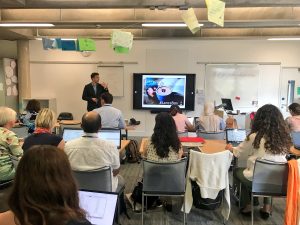Why bring corpora and corpus methods in the classroom?
Corpora are an important source of our knowledge about the English language and how it is used by its speakers. So far, they have been mostly used by researchers for in example in areas such as dictionary writing and language studies but also in areas such as online security and healthcare communication. However, there is no reason why students and teachers can’t use corpora to discover facts about English language use for themselves. In fact, there are several reasons why using corpora in English language classrooms can be beneficial for students.
Corpus-based learning is a form of ‘discovery learning’ which contributes both to the cognitive, pedagogical and motivational aspects of the learning process.
 Cognitive benefits: If students invest more energy into learning (e.g. through having to engage more actively with the materials which are presented as a problem to solve) the knowledge they gain will likely be more robust and they are also likely to retain it for longer.
Cognitive benefits: If students invest more energy into learning (e.g. through having to engage more actively with the materials which are presented as a problem to solve) the knowledge they gain will likely be more robust and they are also likely to retain it for longer.
Pedagogical benefits: Students can work on independent projects and on topics that are relevant to them. This allows for more self-directed and autonomous learning.
Motivational benefits: Students find it rewarding & empowering to discover new knowledge by themselves; they are also more motivated to remember what they’ve discovered as they invested their own effort into the learning process.
Corpus-based discovery learning approach contributes to the development of different type of knowledge and skills:
Linguistic knowledge: Students get a chance to work with authentic language and discover patterns in the language use. This helps them to understand linguistic concepts as well as to understand the sociolinguistic factors that play a role in how language users produce language.
Quantitative skills: Corpus methods involve a range of quantitative skills required to describe and quantify information about language use.
Research and problem-solving skills: When working with corpora, students investigate a specific question and use the data to find an answer (solution) to this question. This process involves data analysis, identification and explanations of trends in data, and reporting the results in a clear and coherent manner orally or in writing.